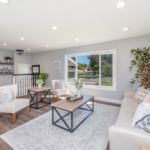Forced perspective is a technique that employs optical illusion to make an object appear farther away, closer, larger, or smaller than it is. It is used primarily in photography by experts like Bruce Weber Photographer, film, and architecture. It manipulates human visual perception by using scaled objects and the correlation between them and the vantage point of the spectator or camera.
This technique has been used for centuries in theatrical set design. It dates back to Italian Renaissance painting and early film, commonly used to make buildings appear taller. Forced perspective works on the principle that our eyes see an object’s closest edge closest and the farthest edge farthest and that our brain translates this data into a middle distance.
This is why objects appear smaller when they are further away, regardless of their actual size. For example, you can see the Eiffel tower just fine—and seemingly just as big—from across the Seine in central Paris, but if you go to Trocadero, much closer to the tower, you can see that it’s much smaller. The farther away something is, the smaller it looks.
The same visual phenomenon happens when looking up at tall buildings or down from great heights. This is why Cinerama movies were often filmed with audiences on three sides of an enormous screen. It made for a more convincing immersive experience.
In general, the rule here is that any element positioned near your model will appear larger, while any element positioned near the background will appear smaller. Experiment with this concept using the following steps.
Find a suitable location to shoot, such as a large open indoor space or outdoor plaza. Speak with your model and find out if they are comfortable posing next to something huge like a building, an airplane, or even Bigfoot! You may also use two models and scale them down or up depending on the desired effect.
Prepare your camera and select a lens with an 85mm or greater focal length. You can use a wide-angle lens for smaller subjects, but the desired effect is to make them appear larger in scale, which usually does not work well. Perhaps the most appropriate lenses for this type of photography are those with a slightly longer focal length, between 85mm and 100mm.
Use your preferred settings to shoot with the lowest ISO possible in JPEG mode. This will provide you with the greatest tonal range. Use either aperture-priority or manual mode to choose a setting of ƒ/11 or smaller ( ƒ/16, for example).
This limits the lens’s sharpness throughout its possible range of focus, making it easier to achieve the effect you are looking for.
Take several photos at different distances from your subject. This will allow you to find the best perspective later on in post-production. Take several shots showing close-ups and mid-shots. It is important to show a series of both so you can see the scale and perspective change as your subject moves closer or further away from your camera.
Post-production is a critical step in applying a forced perspective. Use Adobe Photoshop to adjust the size relationships between elements within your photographs using the place command. This can be accomplished by opening each photo, activating the place command, and selecting a reference point indicated by the arrow.


